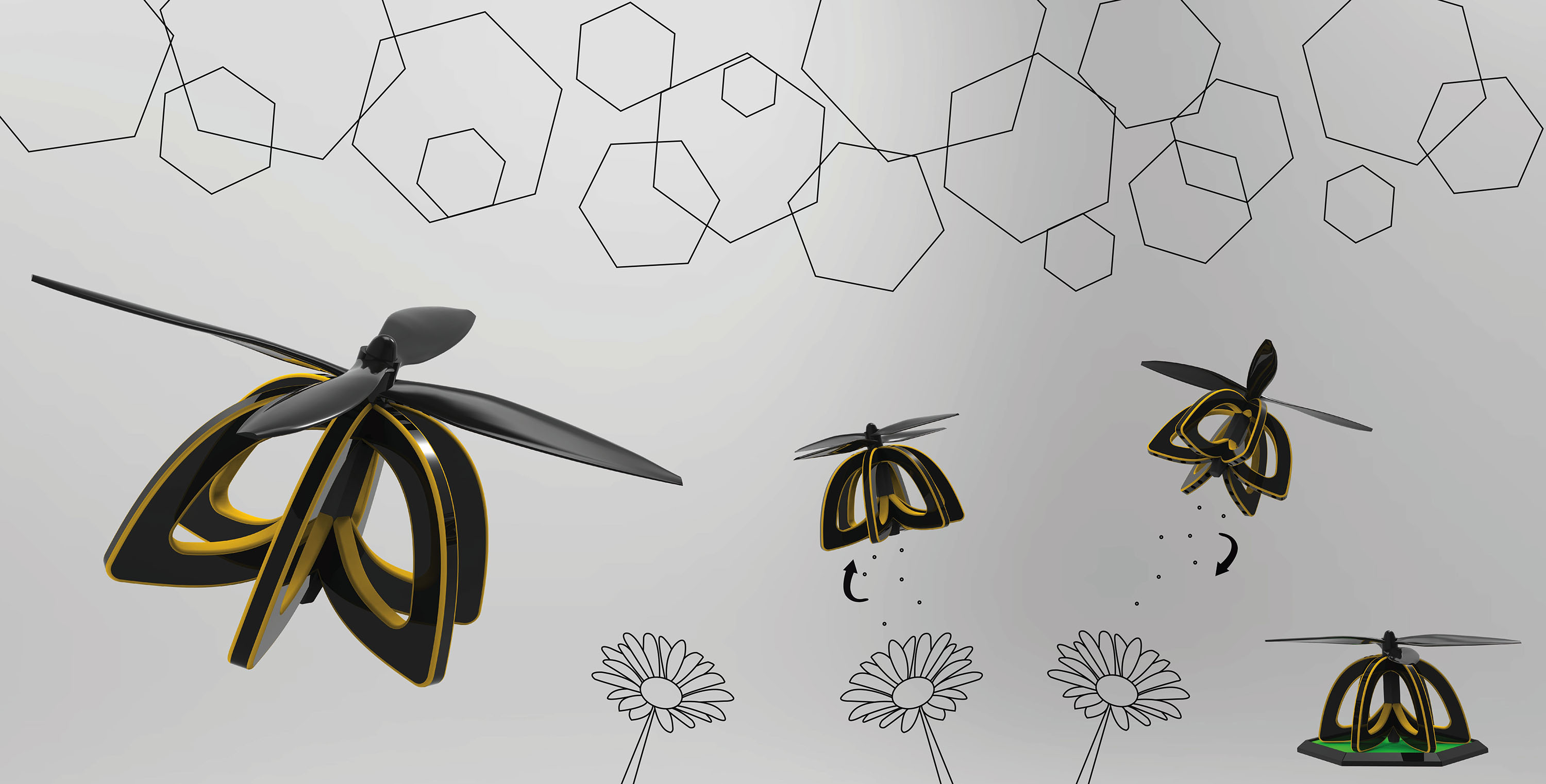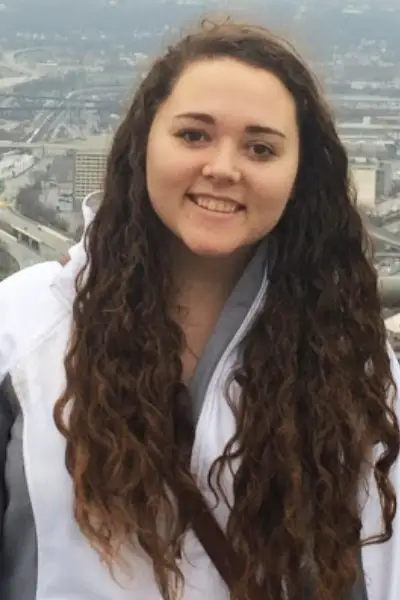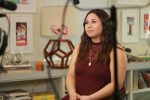Meet Anna Haldewang
The Industrial Design major is solving the nation’s flower-pollination problems.
By Kristian Porter, Northern Kentucky University
Last week, the unthinkable happened: A bumblebee species was declared endangered for the first time in the United States.
Awareness of the decline of bees, and the subsequent environmental crises that a lack of these pollinating pals could cause, has continued to spread as companies like Cheerios and Burt’s Bees create outreach programs.
The list of crops that, if the bees were to go extinct, the world would suddenly find themselves without, is staggering, with coffee, avocados and strawberries being only a few. To combat the bee depletion, many have turned to conservation efforts in search of an answer. One college student found her answer in the most unlikely of places, her classroom.
Savannah College of Art and Design (SCAD) Industrial Design major Anna Haldewang has developed a solution to the problem of cross-pollination by designing Plan Bee, a drone that artificially pollinates plants just as a bee would.

The idea began in her Studio 1 class with an assignment to create a self-sustainable object that stimulates the growth of plants. After viewing the 2009 documentary “Vanishing of the Bees,” Haldewang couldn’t stop thinking about the depletion of the bee population.
“If the bees disappear, so will fruits and vegetables,” she says. “People will wonder why this wasn’t stopped.”
In an effort to stop the future destruction of crops and to complete her assignment, Haldewang decided to think critically about the way plants grow, which logically led her back to where she started: the bees.
“Plants need not only water, soil and sun, but also cross-pollination,” she says.
Plan Bee is controlled by a smart device, and it simulates the work of a bee by using small holes underneath the six sections of its body to take in pollen from one plant. The device then hovers over other plants, distributing the pollen and imitating cross-pollination.
The drone is designed to resemble the color pattern of the bumblebee, black and yellow, and to be large enough to provide an opportunity for education, allowing users to see the entire process of pollination.
Plus, Haldewang was thoughtful in the design process; when turned upside down, the drone looks like a flower, a nod to its designated function. While designed for educational purposes, Haldewang immediately recognized Plan Bee’s other potential purposes.
“I knew after my class ended that Plan Bee had the potential to go beyond being an educational product in backyards and into other areas of farming, especially hydroponics, where insects do not exist,” she says.
In the future, she sees her creation helping to grow the agricultural system as a whole. Her desire to help the world become more sustainable stems from a longtime interest in environmental issues.
“There’s this magnetic pull that draws humanity to nature, and we feel grounded when we’re surrounded by it,” she says.
While her interest in conservation is not surprising, her journey to industrial design might be. Coming into SCAD, Haldewang initially planned to major in Fashion Design. She quickly started to realize, though, that the major wasn’t the best fit. She went to her advisor seeking guidance, and her advisor pointed her in the direction of industrial design.
“My advisor introduced me to another student in the field who gave me a tour of the building and answered my questions about the industry,” she says. “I knew from this experience that it was the major for me.”
Making the decision to pursue an Industrial Design major has made Haldewang take notice of the gender disparities that often plague STEM-related fields. She’s not too worried, though.
“It’s not an area that concerns me, as more women are entering the field,” she says, commenting on the influx of women she has seen joining STEM majors at SCAD. With so many more women in her major, Haldewang wanted to form a kind of community.
“My friends and I at SCAD have recently founded a club focused on celebrating and supporting women in the Industrial Design major,” Haldewang says. A few of the members are also hoping to travel to San Diego to attend the Women + Design Summit for the first time.
Since embracing her new career path, Haldewang says that SCAD has helped her tremendously in moving forward with Plan Bee. Her classmates have been an integral part in her success.

“We’re all supportive of one another and want to see each other succeed,” she says. Her classmates often seek out advice in one another, and they are not afraid to step away from their own work to give a helping hand.
With added support, she is now in the beginning stages of development, after the drone made national news as only a prototype.
“I am seeking investors for the product and hoping to get it out on the market in the coming years,” she says. With so much on her plate, balancing her school work can be a struggle. She has her professors to thank for being able to juggle it all.
“I am thankful that I can turn to my professors for advice, and I know that I am getting the best opinions, as they have past experience in the Industrial Design field,” she says.
Along with professors, she says that lists have been a life saver. She adds, jokingly, “If lists didn’t exist, my life would fall apart!” As a senior, Haldewang is constantly thinking of the future and is looking forward to her graduation this spring.
“I hope to have a career in the industrial or marine design field,” she says. “I hope to grow as a designer and develop exciting projects that benefit society and the environment.”
With such a passion for helping the planet, it comes as no surprise that, if given the choice of any superpower, Haldewang would choose talking to animals.
“The Disney princesses had the best animal sidekicks!” she laughs. Though she can’t speak to animals, she’s certainly doing her best to save her own buzzing sidekicks, and that’s just as impressive.











